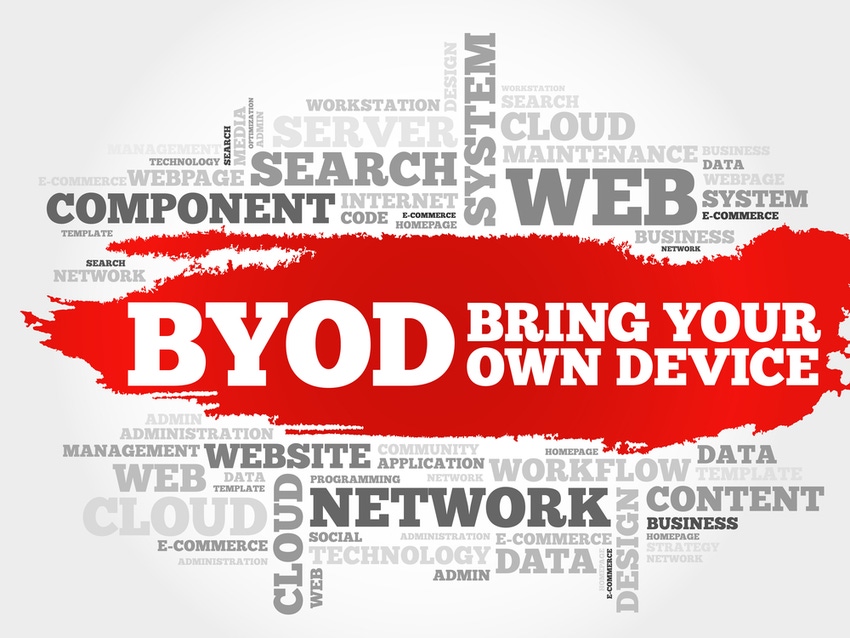Why BYOD + Big Venues Equals New Opportunities for Partners
As BYOD intersects with the end of carrier-funded in-building connectivity, partners have a major opportunity.
September 1, 2017


Julie Song
By Julie Song, President of Advanced RF Technologies
The BYOD and enterprise mobility market could more than double over the next four years, from $35 billion in 2016 to $73 billion by 2021, says a new report by MarketsandMarkets. That growth is driven in part by enterprises’ need to increase employee productivity and satisfaction while reducing hardware costs. But the rise and anticipated dominance of bring-your-own-device policies even within the Fortune 500 has dramatically altered the reseller market, too, offering a newfound opportunity for telecom systems integrators and relevant equipment manufacturers to cultivate top-tier clientele.
Before BYOD was commonplace in work environments, a carrier-funded model was the most popular funding scheme for enterprise in-building connectivity. This approach was mutually beneficial for the wireless service provider and the venue. Carriers like Verizon, AT&T, Sprint and T-Mobile would cover the cost of DAS (distruibuted antenna system) technology, repeaters, base stations and small-cell equipment. For these carriers, this funding model represented a high cost of doing business with enterprises, but one that provided significant ROI insofar as the carrier would typically gain thousands of enterprise customers. However, the model also closed a highly valuable segment of potential customers off from the reseller market, to the extent carriers had their own exclusive network of DAS providers and service professionals to perform installations.
Today, we rarely see exclusivity to a particular carrier’s signal at any given enterprise. I’m seeing this firsthand, as my company makes in-building wireless systems, including those used for large, densely populated venues, like buildings that host Fortune 500 companies as well as sports stadiums, airports and hotels. Still, the need is there: In many cases, the cellular signal from outside cannot adequately penetrate into the building. In others, having a large number of employees connected in a concentrated space spreads the signal too thin. Many employees now bring their own devices and offer their employers very little choice in the decision-making process of which carrier they subscribe to.
According to that MarketsandMarkets research, BYOD programs are implemented in 36 percent of companies and are projected to be in place at almost 50 percent at the start of 2018.
This has shifted attention to other, less common business models for ensuring connectivity to large venues and organizations — many of them representing untapped opportunity for resellers.
Selling Mobility Management: Even the smallest customer needs EMM. Here are eight trends in mobility management that are creating tremendous opportunities for channel partners. Download our free report now! |
The first model type to gain more usage is building-owner funded. While it’s no longer ideal for wireless service providers to front the cost of DAS technology, the requirement to keep employees connected hasn’t changed. Facilities ranging from Wall Street to collaborative working spaces still need to provide superb in-building connectivity to their resident companies and employees. Without expertise from the carrier in choosing the right DAS for their size, building owners need professional advice to ensure a connectivity solution that fits with their building’s unique structure and installation requirements.
One of the most difficult aspects of selecting a DAS is identifying the …
… required frequencies to cover the building, since each carrier uses its own frequencies for 3G, 4G and soon, 5G. Building owners also need to choose a DAS that can be easily upgraded; future-proofing is critical to avoid the costly event of replacing the entire system when 5G becomes the standard.
In short, building owners desperately need the services of a systems integrator.
The second funding model being driven by BYOD is neutral-host owned/operated. A third-party provider, or neutral host, pays the upfront cost of the equipment and installation as well as providing ongoing maintenance. The neutral-host system owner then attempts to profit by supporting all wireless service providers, but charging them a fee to lease space. For carriers, this means avoiding the upfront costs of a DAS while retaining the benefits of keeping subscribers connected. For systems integrators, they can gain access to a clientele that was previously reserved for the carriers by partnering with these neutral hosts, many of which are still nascent in their existence and thus more flexible in their choice of partners.
In short, resellers that never had access to major venues and Fortune 500 enterprises now have the opportunity to sell into those sites. Your job is to offer an attractive partnership proposition. Stress your ability to provide expert guidance and preferred equipment based on years of experience. This is of immense value to companies that want to avoid the complex challenges associated with enabling the robust connectivity that most employees and visitors take for granted.
BYOD is here to stay and offers its own ops for the channel. It has created a more dynamic, competitive connectivity environment that represents a tremendous and lucrative opportunity for telecom resellers.
Julie Song, president at Advanced RF Technologies, is responsible for overseeing all aspects of the company. Prior to establishing ADRF in 1999, she worked at General Motors and Northrop Grumman Corp.
Read more about:
AgentsYou May Also Like
